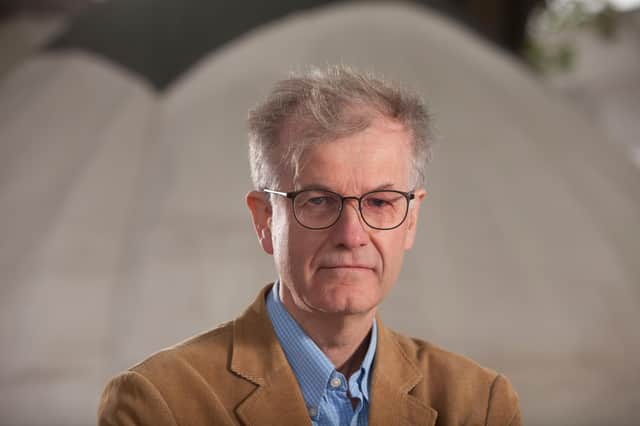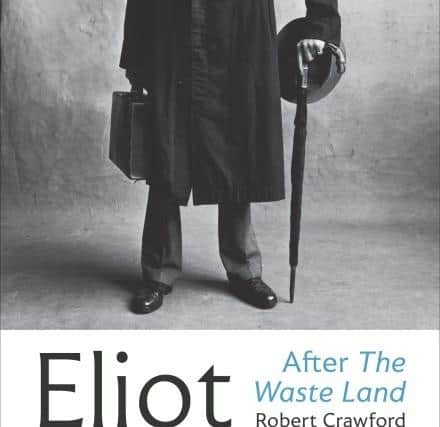Book review: Eliot After The Waste Land, by Robert Crawford


Near the beginning of the second volume of Robert Crawford’s magisterial biography of TS Eliot, the problem for the biographer becomes clear. Eliot wrote, ironically in a letter, “If I could destroy every letter I have ever written in my life I would do so before I die. I should like to leave as little biography as possible”. Eliot did vacillate from this position, but there was a perpetual reticence to his life. Crawford is the first biographer to have access to Eliot’s correspondence with Emily Hale, which was sealed for 50 years, and there is therefore a tranche of new detail, speculation and inference possible. But Crawford wisely states “my aim is not to neaten his life, or reduce it to one expository template, but to let it emerge in its sometimes complex, contradictory messiness”.
Messiness is a very apposite word. This volume sees Eliot’s separation from his first wife, Vivien, who was eventually sectioned. There is one photograph taken by Virginia Woolf’s husband, Leonard, of an abashed looking Eliot and Vivien with a furious, scolding look, pointing at him. It ought to be given to anyone contemplating marriage as a warning. All the while Eliot was romancing, in an epistolary form, an old acquaintance Emily Hale. The letters are revealing: Eliot can seem offputtingly priggish as he castigates her for taking Anglican communion although she was a Unitarian. Theology also inflects the more emotionally turbulent side of their relationship, as Eliot made it clear that his marriage to Vivien was indissoluble. He refused to divorce her, and even after her death would not re-marry Hale. He did, however, confide in her that “my life and work will be misunderstood to the end of time”, called her his “Raspberrymouth”, and the time he spent with her does inform, if not inspire, the imagery of the Four Quartets.
Advertisement
Hide AdAnd yet; and yet. Towards the end of his life he wrote a strange document, saying “I came to see that my love for Emily was the love of a ghost for a ghost, and that the letters I had been writing to her were the letters of an hallucinated man, a man vainly trying to pretend to himself that he was the same man that he had been in 1914”. There is something more than ungallant in leaving a kind of codicil that insists that their letters were is some sense never really true. Of course, by this time he had re-married, to his secretary Valerie Fletcher, who became the formidable gatekeeper of the Eliot estate. In perhaps the most astonishing moment of the book, it is recounted that Valerie heard a recording of Eliot reading when she was a14 year-old schoolgirl, and declared “I shall marry that man”. Her infatuation with Eliot became something of a family joke. But nor can it be denied that Valerie made Eliot happy. “At the age of 68 the world was transformed for me, and I was transformed by Valerie”, he wrote in the same piece where he renounced Emily. Biographers, let alone literary reviewers, are not God, weighing another’s heart against a feather and pronouncing judgement. It would be churlish to begrudge him his late and unexpected happiness.


All of this is interesting and Crawford handles it judiciously. Eliot, however, is remembered as one of the greatest poets of the 20th century, not for his haphazard romantic life. Crawford places the Four Quartets in the context of war and depression, as much a work of ruination as The Waste Land but with a searing and redemptive quality. The problem for any biographer is after the Four Quartets, the poetry ceases. Eliot did still write, and readers may have memories of Murder In The Cathedral (one of the first verse dramas to be filmed). But an unscientific straw poll of my friends in the book world was remarkable in how few of them had read The Family Reunion, The Cocktail Party, The Confidential Clerk or The Elder Statesman. More remarkable perhaps is how few were embarrassed by this. The idea of a revival of Eliot’s drama seems a remote proposition, and Crawford is fairly unsentimental about the lack of that prospect.
I remember speaking with a former girlfriend’s grandmother who remembered reading Eliot for the first time. What she recollected was the sense of shock. “I grow old… I grow old.. / I shall wear the bottoms of my trousers rolled”, she recited from memory, adding “Well, we thought, that’s just not poetry”. Eliot, in some ways, created a whole new key of poetry. Crawford does bring back a shocking Eliot. This book is properly complex, both in terms of the art and the life. I will relish knowing that the Eliot who was described as wearing a “four piece suit”, was also the Eliot who bought “fake plaster dog poo” and “stink bombs” for his four year old nephew.
Eliot After The Waste Land, by Robert Crawford, Jonathan Cape, £25.